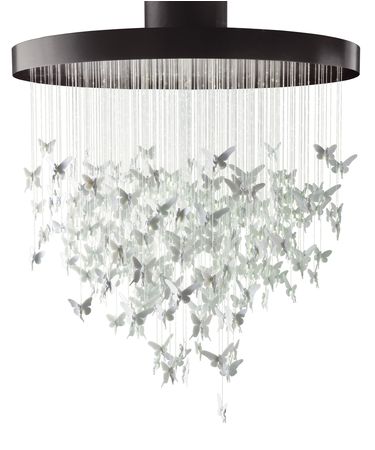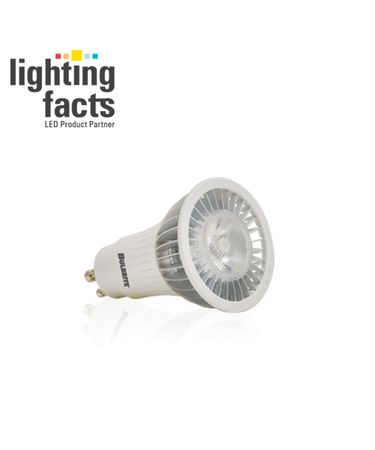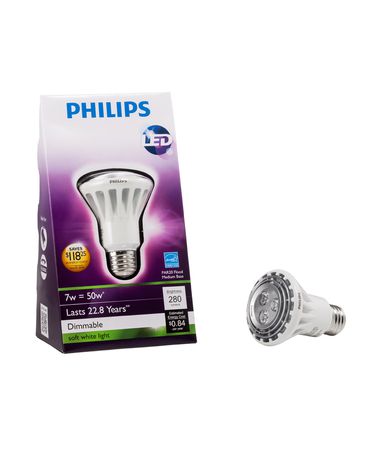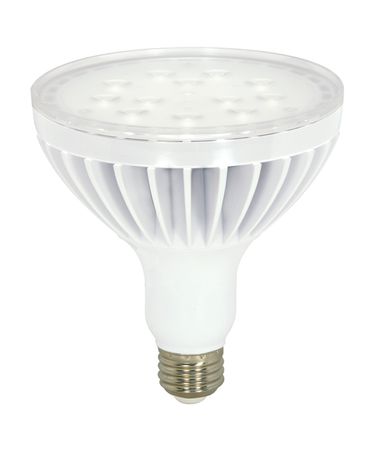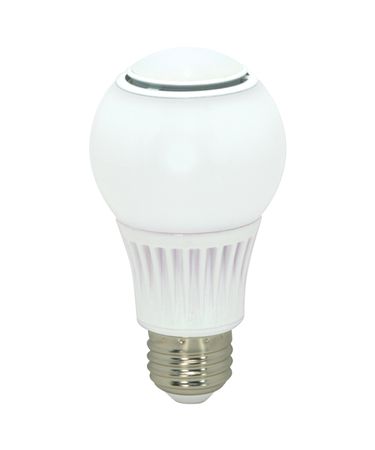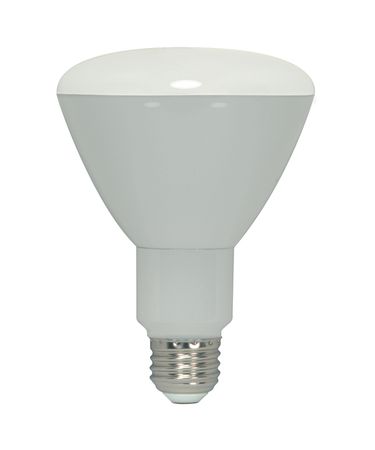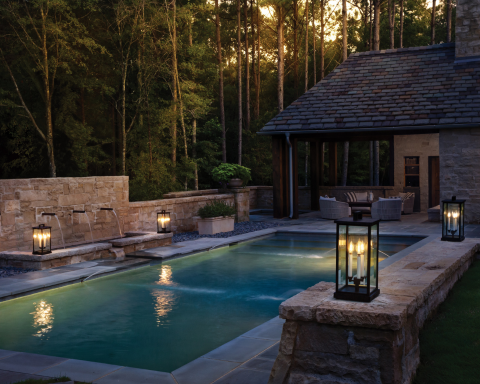Free Ground Shipping on Orders Over $49 Details & Exclusions Excludes Curb Side Delivery (LTL). Lower 48 United States Only.
Apr 3, 2014
The Complete LED Energy Saver’s Buying Guide
LED AND ENERGY SAVING GUIDELINES
LED foyer fixture from Artcraft
Saving on energy costs and outfitting your home or office environment with new lamps and light fixtures should be at the top of your home improvement project list. Not only do new light sources deliver a superb quality of light, they are the key components in decorative and energy-efficient lighting design.
It is an exciting time in the lighting industry. New products are being developed every day, and LED (light emitting diode) and SSL (solid-state lighting)* lamps and light fixtures are at the core of future illumination.
What’s more, the integration of LEDs into building and electronic communication systems is bringing everything together and enabling total control with the ease of a smart phone!
For all that, this flow of new technology is creating an abundance of questions…
•Which LED lamps are the best and how do we know we are getting the quality of light we need?
•Will new LED lamps be compatible with current light fixtures and older automated systems?
•Should all light fixtures be updated with LED lamps?
•Why are LEDs so much more expensive than old incandescent light sources?
Here are some guidelines to help you answer those questions and invest wisely toward one of the greatest home improvement projects of the decade:
WHAT YOUR LIGHTING DESIGN CAN AND SHOULD DO FOR YOU…
In addition to providing optimum levels of brightness, good lighting design must also…
•Eliminate glare
•Increase comfort
•Provide continuity
•Deliver good color rendering
•Allow for adjustability
•Instantaneously make you ”feel good” with an inviting luminous appeal
Because LED lamps require so little energy to provide a great deal of illumination, the energy consumed by the bulb will not be your main concern; your main concern will be getting the desired level of brightness and light appearance.
*NOTE: LEDs, also referred to as SSL, provide the most energy-efficient and durable illumination because they are composed of “solid state” semiconductor light emitting diodes.
LED Bulb Buying Guidelines as Easy as 1-2-3
1. Familiarize yourself with labels on new bulb cartons.
Brightness (in lumens)
Estimated Yearly Cost (depends on rates and use, $)
Lamp Life (based on 3 hrs/day use, rated in years)
Light Appearance (CCT) (warm-cool, rated in degrees Kelvin (K))
Energy Used (in watts)
Color Rendering (CRI) (measured on a scale of 0-100)
BRIGHTNESS
Brightness levels are measured in lumens to give the amount of total light created by the light source. Beyond the lumen count, “useable” light and brightness levels are also affected by fixture housings, lenses, filters and shades. There are clear standards set to measure the lumen output of each LED chip. ↓
LIGHT APPEARANCE
Light appearance or correlated color temperature (CCT) helps determine the quality of illumination. Designated on the Kelvin (K) scale, CCT for decorative interior spaces should be in the warm white (2700-3000K) range. Sometimes lighting in the neutral white (3500-4000K) is preferred for certain areas, such as bathrooms and kitchens.
LAMP LIFE AND THE LED
Lamp life refers to how long a light source will last once it is installed and used on a daily basis in a typical application. Lamp life ratings, based on estimates from testing, convey the time that half the bulbs in a sampling have burnt out or dimmed below fifty percent.
However, the LED itself is a very long-lived semiconductor device compared to a fluorescent tube or incandescent filament. LEDs do not “burn out.” They get progressively dimmer over time. This process is referred to as “lumen depreciation.” For this reason, manufacturers are now referring to “useful life” instead of rated life where useful life is defined as the time it takes a lamp to reach 70 percent or 50 percent of its initial light output. As far as the lamp life of LED bulbs—“There’s still much to learn and data to gather and analyze before some kind of industry definition is established and broadly accepted. “—Terry McGowen, FIES, LC ALA Director of Engineering and Technology ALA Newsletter-May 8, 2013
COLOR RENDERING AND THE LED
The color rendering index (CRI) measures the ability of a light source to bring out the true colors in décor, objects and surfaces. Based on a scale of zero (no color rendering) to 100 (perfect color rendering), a minimum of 80 CRI is acceptable for interior lighting applications. A CRI of 90+ is even better.
However, because the standard CRI measurement does not always yield true results for some LED light sources, a new standard measure of color quality is in the works: The Color Quality Scale (CQS) may soon replace CRI for a truer account of color rendering provided by the LED light source.-www.ledlightingexplained.com, Philips Solid-State Lighting, 2010
2. Match light fixture to light source to ensure peak performance.
LEDs small size, low-temperature emissions, and focused uni-directional beam patterns make them perfect light sources for undercabinet lighting, track lighting and pendant fixtures.
LED general and flood lighting replacement bulbs are composed of clusters of diodes to provide broader beams of light. General service LED bulbs that are multi-directional with 360-degree angle capacity are doing an excellent job of replicating the desired illumination of old incandescent bulbs. These LED lamps include A19, PAR, BR and candelabra light sources that are providing more light with the added benefit of tremendous energy-saving, maintenance-free illumination.
Due to their long life and durability, LEDs are excellent in hard to reach places like foyer, attic and cathedral ceiling fixtures.
*Check for compatibility with all new light sources to make sure lamps, light fixtures, dimmers and automated controls are a suitable match.
3. Compare “apples to apples”; diodes to diodes to ensure top quality.
Many factors contribute to the quality of the LED light bulb. Advancements in diode technology and mass production of LED light sources are bringing costs down to make these bulbs more affordable. However, be wary of “cheaper” LED light sources.
Factors in the processing of an LED light source include:
•COB (chip on board), the diode itself is composed of a chip that largely determines the quality of the bulb.
Prior to being marketed in appliances, fixtures or light bulbs, LEDs are sorted into bins according to their light output (lumen output) and color temperature. Due to the process of “binning,” LED chips vary in their quality—especially in relation to their lumen output and color, so it is important to purchase LED light bulbs and LED light fixtures from a reputable dealer.
LEDs chosen from bins with higher lumen output are of better quality. Color temperature is determined by matching up each LED according to a chromatic line grid for a specific color temperature. LEDs chosen from larger bins contain more color variation , so they deliver an inferior quality of light.
•LPW (lumen per watt), this measurement helps to determine energy-efficiency and efficacy
•IC (integrated circuit) drivers, the quality of the LED lamp is also dependent on the type of driver installed. LED bulbs contain “drivers” that can fail just like the ballast of a CFL (compact fluorescent). Better driver components make for a higher quality LED light source.
ENERGY STAR-ratings ensure that the LED has met stringent testing procedures. ENERGY STAR-rated lamps clearly identify characteristics on LED light sources to guarantee that they consistently and reliably meet the desired brightness (lumens), energy-efficiency (lumens per watt), color temperature (CCT), color rendering (CRI), and dimmability requirements.
New ENERGY STAR Regulations include:
•Consistency Control: More standardized testing methods to improve consistency.
•Dimmability Ratings: A lamp is either dimmable or not dimmable. If a lamp claims to be dimmable, testing is required and it must dim down to at least 20 percent. If it is not dimmable, it must say so on the package.
•Greater Energy Conservation: Efficiency requirements have increased for specific lamp wattages and types.
NOTE: The Environmental Protection Agency (EPA), along with ENERGY STAR offers rebate programs as an added incentive to help you spring into action and upgrade with LED. Check out rebate programs in your area or contact an American Lighting Association (ALA)-affiliated showroom for more details.
LED chandelier “Niagara” from Lladro
1800lighting’s Top LED Bulb Pics:
Bulbrite’s LED MR16 lamp
Philips medium base LED
Philips dimmable LED
Satco’s PAR38 indoor-outdoor LED lamp
Satco’s Kolour One A19 omni-directional LED lamp delivers 820 lumens and excellent color consistency.
Satco’s Ditto PAR LED lamps are available in 25- and 40-degree beam angles and either 3000K or 4000K.
Visit a Capitol Lighting showroom or 1800lighting.com for more information on the latest energy-saving illumination.


